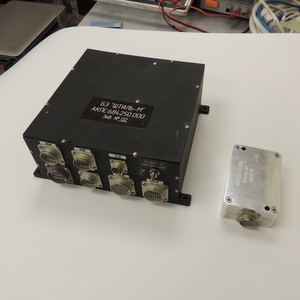Samara scientists receive telemetry of the magnetometer, which sent into space on December 26, along with “Resource-P” No. 2 - the latest Russian satellite of the Rocket and Space Centre “Progress”. Equipment testing began on January 4. “Shtil” collects and transmits the information to help improve the efficiency and reliability of spacecraft.
The magnetometer “Shtil-M” No. 2 is equipped with six sensors that measure the magnetic field in different compartments of the device, fix electrical discharges and the impact of the space environment on the equipment functionality. After analysing the data, scientists will be able to minimize the negative impact on the satellite equipment accuracy.
"Exceeding the threshold values of the magnetic field inside the satellite leads to of the equipment malfunction, - says the device developer Arseniy Ilyin, a graduate student and engineer of SSAU Institute of Space Device Engineering. - Therefore, the data transmitted by “Shtil-M” is extremely important for the experts. The sensors of our device are also able to follow the fluctuations in the power supply. And if there will be evidence that the voltage is outside the calculated limits, engineers of “Progress” will check the operation of the main equipment of the satellite”.
The magnetometer “Shtil-M” No. 2 is the third unit of the series, which was created in SSAU Institute of Space Device Engineering led by Professor Nicholay Syomkin. The first “Shtil-M” worked on the spacecraft “Resource-DK” in 2006. The second and the third (series “Shtil-M”) were sent into the orbit as a part of “Resource-P” (2013) and ‘Resource-P” No. 2 (December 2014). Another device series “M” is preparing to go to space with “Resource-P” No. 3 in 2015. Now it is being tested in the shops of the Rocket and Space Centre “Progress”.
For reference
The main directions of work of the Institute of Space Device Engineering are: development of advanced space technologies; preparation and performance of experiments on spacecraft; development of scientific electronic equipment for performance of space experiments; participation in the development of small satellites for the scientific experiments.
 RU
RU  EN
EN  CN
CN  ES
ES 